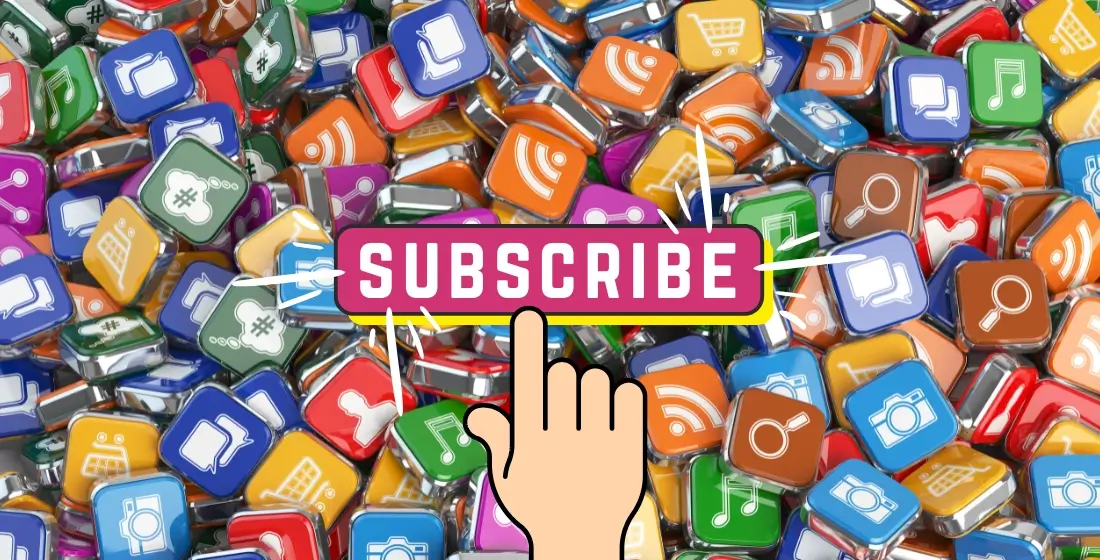It is with increasing regularity that our favourite pieces of software fall out of favour by switching over to being paid for by subscription. This is commonly a hated move and perceived as a cash grab by the creators of the software. But is this fair? Here I am to defend the subscription model of software use and try and convince you that it can be a good thing.
The Olden Days
Once upon a time there was the internet. But the internet was slow and accompanied by a WZEEE-GRRRR-BZZZ-BZZ-BZZZZ-HGHGHGHGH noise every time you connected to it (I’m talking about dial-up noises for all you youngsters out there). When we wanted to buy a new piece of software we’d pop along to our favourite music shop, torrent site or (God forbid) PC World and buy a CD-ROM that contained our desired application. We would then go home, load the software onto our machine and use the software until we bought a newer version some years later. We liked this model of software ownership and would like to do it again, but without the trip to the shops.
The New Days
We can do that. We can buy software without going to the shops these days as the internet doesn’t have to go WZEEE-GRRRR-BZZZ-BZZ-BZZZZ-HGHGHGHGH anymore. This benefit to us has also brought about benefits to the creators of software too. In those days of old, software would be released on CD-ROM (or DVD-ROM eventually) and you would likely have to wait until a new version of the software came out to get any updates. New features and debugging would have to wait for a couple of years until it was worthwhile creating version x.1 or x.2 and producing CD/DVD-ROMs. This new internet download world means that we can much more easily download new features, patches or security updates as soon as they become available. This is great for us as well as being great for the software creators. It means they can constantly be improving their offerings taking advantage of new tech and possibilities as soon as possible, and they can innovate much easier, creating new ways of working and new collaborations with other software companies. And so we have a world where we download a new piece of software and then we can continue to receive updates as often as they are released – sometimes several times a year. Hoorah for our Brave New World!
OK. But Why Subscription?
Two things.
Firstly, every time you open the software there will be a little ping to the company alerting them that you’ve booted up a version of their software. They will then possibly ping you back to alert you that there is an update available. This means you’re using their servers to send and receive such messages. You’re obviously also accessing their servers to download the updates, so why do we think we should be entitled to do this without a charge?
Secondly because we made a mistake in our previous thoughts about software. One of the things I hear a lot when people are bemoaning subscription is ‘I liked it when I could just own software!’ Here’s the bad news – you never owned the software. The only way you can own software is if you make it yourself.
Think about that process of installing new software onto your machine. There is always a huge section of T&Cs that we scroll through without paying any attention to the contents of so we can tick to box at the bottom and carry on with the installation. If you’d ever read that text back in the days of CD-ROMs you would have seen several clauses about what you are and aren’t allowed to do with the software. That would suggest that you don’t own it. And that box you ticked was you agreeing to abide by the terms set out by the owners of the software – ie not you.
Even back in the halcyon days of WZEEE-GRRRR-BZZZ-BZZ-BZZZZ-HGHGHGHGH and trips to the shop all you ever actually owned was the CD/DVD-ROM the software came on, the case the disk came in and a license to use the software. In this much nothing has changed. Maybe a subscription model makes that point clearer than a one-time purchase. Back in the olden days once we’d finished with a piece of software we might have stuck in on eBay and made a bit of money back. It is highly likely that this was prohibited by those T&Cs we signed without reading.
Price
Let’s think about price for a moment. A monthly/yearly subscription price is a small amount compared with that one-off charge. If you want to stay up to date with your software, you’d need to stump up that larger amount of cash every couple of years. It’s hard to tell because of the incremental changes of a subscription vs the big changes of infrequent new versions, but I think in the majority of cases with the monthly subscription you’re likely getting a better deal.
For example, the full package of Adobe Creative Cloud currently costs £56 per month*. Back in the days of CS6 (the last version before subscriptions were introduced), the full package could cost you £8,000. If you were a facility you would need to keep up to date and so this expense was unavoidable. Let’s do the maths. £8,000 would get you 142 months at £56 per month. That’s 11 years. How many version updates were there in 11 years.
Hoorah for subscriptions!
* with Helen’s negotiation skills we’ve got our full Creative Cloud subscription down to under £20 per month.
Fringe Benefits
It’s not uncommon for software companies to offer more than just the core software for our subscription money. Many offer cloud storage (some just for project files and things related to their product, but some just give us cloud storage), many also offer deals or free version of other software that works alongside their own. I believe that the subscription model should also keep the companies on the hook in offering a higher quality of customer support, but in reality this doesn’t always happen (I’m looking at you Adobe and Avid). These things are there for us to take advantage of – or not. I’m a Yorkshireman, I like to get value for money. I crawl through every offer that’s made to me if I’ve already paid for it!
In Conclusion
There are good deals and bad deals. This is true of subscriptions as well as everything else. Think about your cashflow – are you better off making smaller regular payments or larger one-offs that may come at inconvenient times?
Which software meets your needs best is – I believe – the more important question than how it’s paid for. If you’re struggling to find that, I can help.


